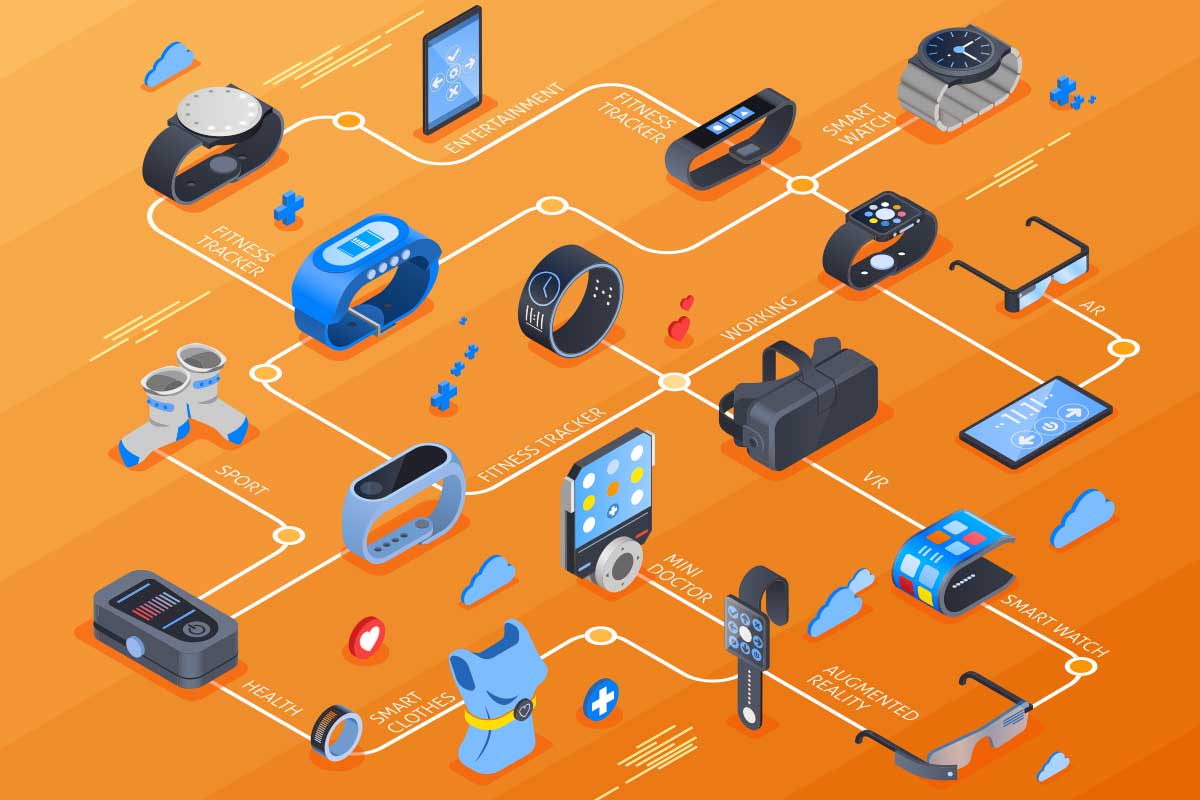
The use of smart wearable devices – think fitness trackers, heart rate monitors, sleep trackers, smartwatches, rings, and even glasses – has grown exponentially in recent years. And with each new iteration, these technological marvels inch us closer to a future Brave New World that was only imagined as recently as a generation ago.
Where’s Rex? Check his pet tracker. How far did you run? Check your smartwatch. Why do you feel so groggy at work? Check out your ring’s sleep report.
Make no mistake, we are in the middle of a technological revolution, with devices hurtling data at us at warp speed – from all over our bodies – with ever-increasing sophistication and accuracy.
This is why there’s no time like the present to take a moment and consider these 15 interesting facts about smart wearables that you may not know, but probably won’t soon forget:

- Today, almost 1 billion people use smart wearables daily. For context, the world’s population is just over 7.5 billion.
- Roughly one in five Americans regularly uses a smartwatch or fitness tracker.
- Women are more likely than men to periodically use smartwatches or fitness trackers (25% vs 18%).
- Even though women globally tend to use the most fitness trackers, males own the majority of smartwatches.
- Wearables skew younger. In fact, smartwatches or fitness trackers are more likely to be worn by those aged 18-49 (25%).
- Smart wearable owners tend to have more disposable income. Thirty-one percent of Americans with annual household incomes of $75,000 and above regularly wear fitness trackers, as opposed to 20% with household incomes between $30,000 and $74,999.
- Smart wearables really do help to make us healthier! People who use fitness trackers are more active than people who don’t, taking on average 2,000 more steps per day.
- Indeed, research has shown that devices such as pedometers and step trackers were associated with higher levels of physical activity in 70% of the studies examined.
- Among owners of smartwatches and fitness trackers, 40% say they have privacy concerns about the data collected. But when those users also subscribe to a service that provides health and fitness reports based on their device’s data, privacy concerns rise to 60%.
- The global fitness tracker market size was worth about $36 billion USD in 2020 and is projected to grow to $114.36 billion in 2028.
- According to Salesforce, 79% of companies that have adopted wearable tech in business say it is or will be a strategic part of their future success.
- The use of industrial wearable devices in places like factories and distribution centers is growing rapidly, and will exceed $2.78 billion in sales by 2024. Reasons cited for this expansion include increased productivity, the reduced number of injuries, improved awareness, and expanded hands-free training.
- A recent survey by the American College of Sports Medicine (ACSM) shows that the top current fitness trend is wearable technology, beating out home exercise equipment, outdoor activities, and strength training with weights.
- There’s a lot of buzz today about new and upcoming smart glasses, suggesting a technological breakthrough in the sector. What you may be surprised to know? Google Glass never really went away.
- If you open up roughly 1 out of 2 smart wearables in the world? You’ll find an Apollo SoC chip from Ambiq®.

How Ambiq Contributes
Wearable devices require reliable and ultra-low-energy components for a seamless user experience. Since these devices continually collect health data, their processors must be optimized to perform these tasks on a low electric charge. Ambiq’s Apollo series of System on Chips (SoCs) can enable wearables to last for days or even weeks on a single charge.
Through the advanced Sub-threshold Power Optimized Technology (SPOT®) platform, Ambiq has helped many leading manufacturers worldwide create products that can operate for days, months, and sometimes years on a lithium battery or a single charge. Visit ambiq.com/wearables for more information.


